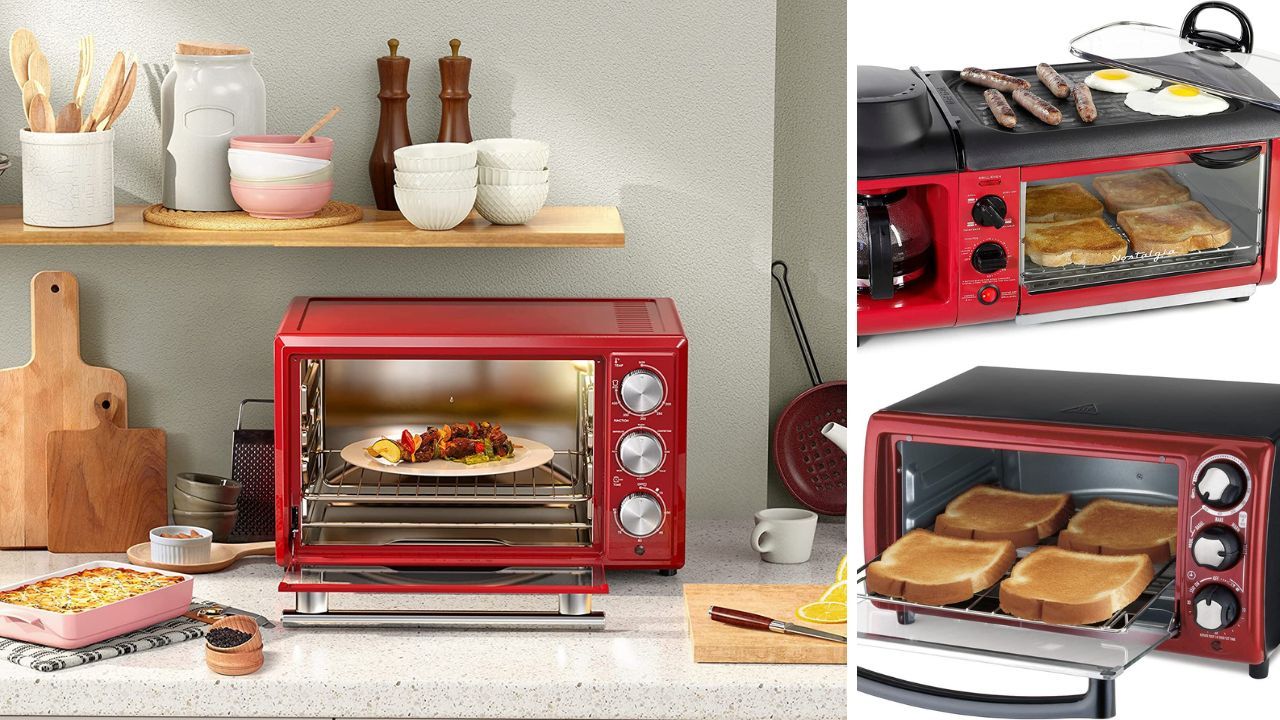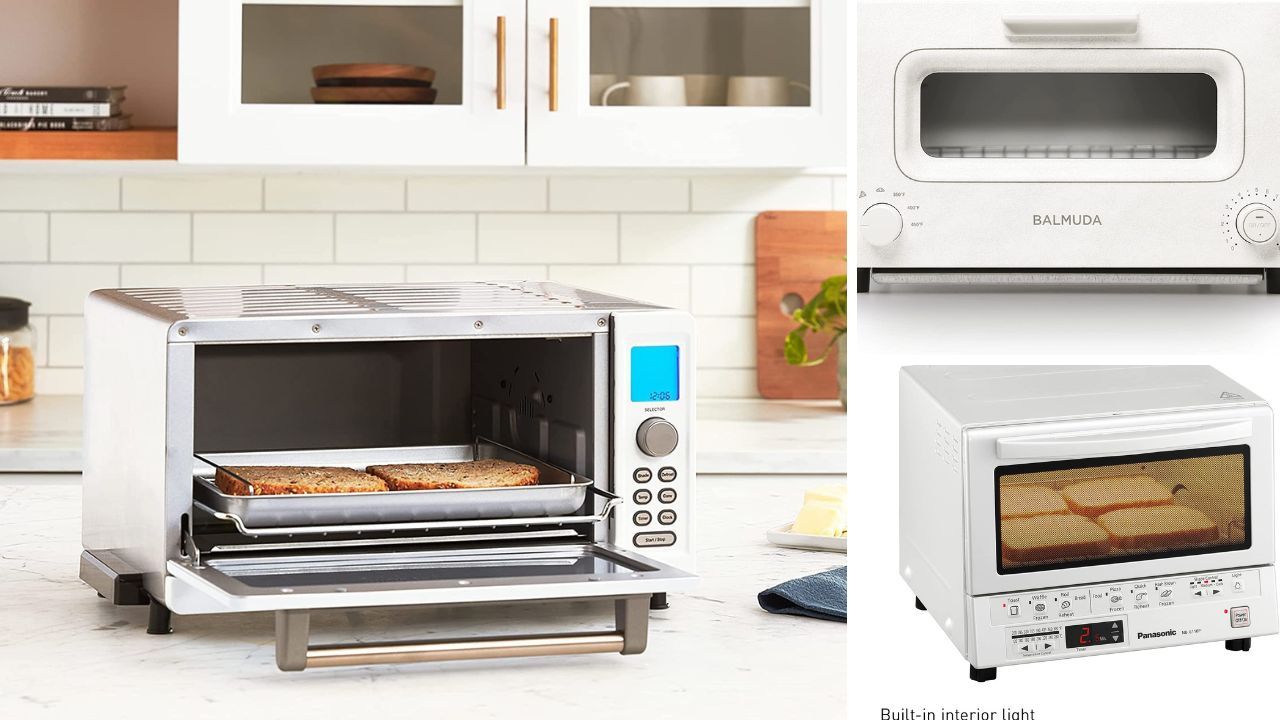Toaster ovens have become increasingly popular over the years, and for good reason.
They're versatile, convenient, and can cook a wide range of foods quickly. But how exactly do they work?
At its most basic level, a toaster oven works by using heating elements to generate heat and cook food.
The toaster oven typically consists of a small enclosure that houses the heating elements, a thermostat to regulate the temperature, and a timer to control the cooking time.
When you turn on the toaster oven and set the desired temperature and time, the heating elements will begin to warm up the interior of the oven.
As the oven heats up, the thermostat will monitor the temperature and make adjustments as needed to ensure that the oven stays at the desired temperature.
Once the oven has reached the desired temperature, the timer will start counting down the cooking time.
When the timer reaches zero, the oven will turn off and your food will be ready to eat.
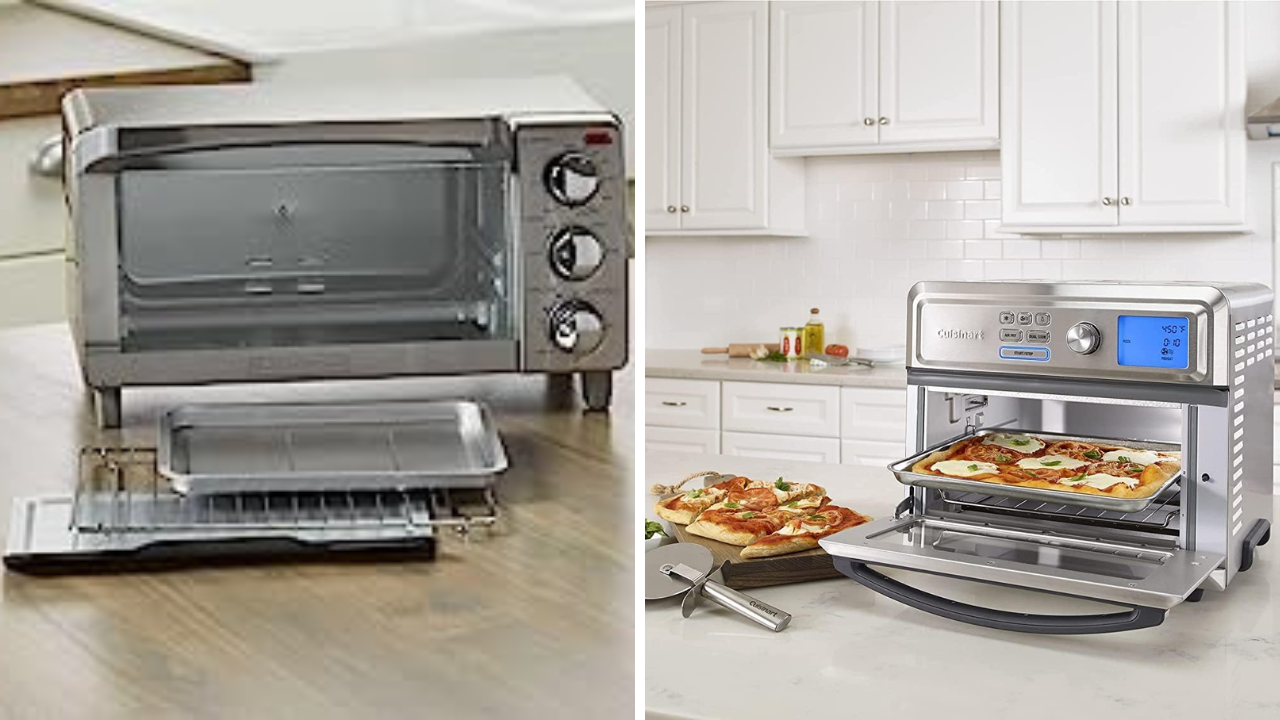
Key Takeaways
- Toaster ovens work by using heating elements, a thermostat, and a timer to cook food.
- The thermostat regulates the temperature inside the oven to ensure that it stays at the desired level.
- The timer controls the cooking time and turns off the oven when the food is ready.
Understanding the Basics of a Toaster Oven
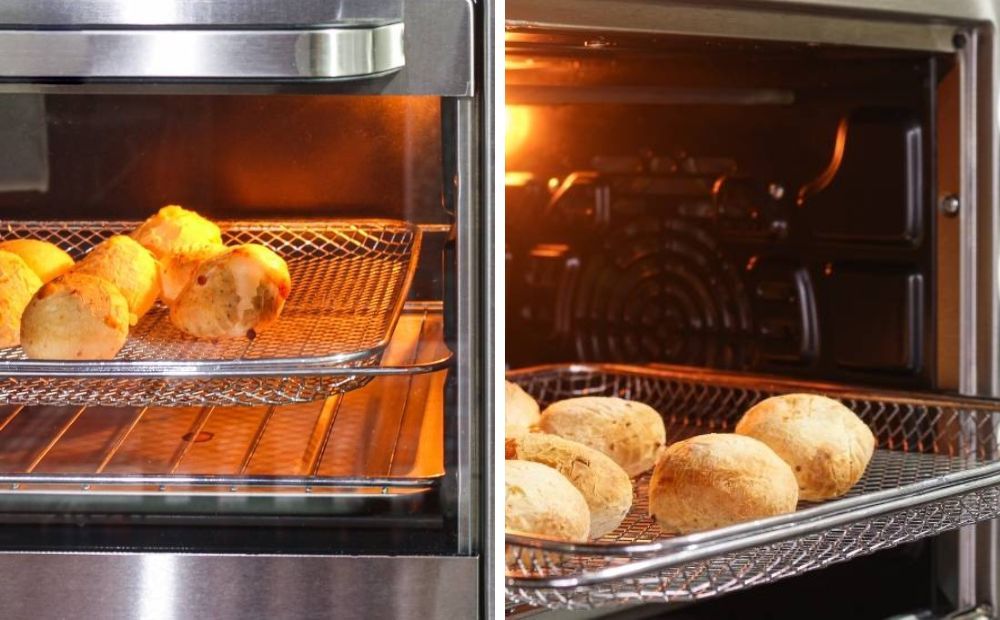
Toaster ovens
A toaster oven is a small electric oven that is designed to sit on a countertop. It is a versatile appliance that can be used to toast bread, bake small items, and even broil food.
Toaster ovens are a great alternative to traditional ovens because they are smaller, use less energy, and can be used to cook smaller portions of food.
The basic components of a toaster oven include a heating element, a thermostat, and a timer.
The heating element is responsible for heating up the cooking chamber, while the thermostat controls the temperature. The timer is used to control the cooking time.
Toaster ovens come with a variety of settings and features that can be used to customize the cooking process.
For example, some toaster ovens come with a convection setting, which circulates hot air around the food to ensure that it cooks evenly.
Other toaster ovens come with a broiling setting, which is great for cooking meats and vegetables.
Toaster ovens are also designed to be easy to clean and maintain. Most models come with removable crumb trays and racks that can be washed in the sink or dishwasher.
Some models even come with a self-cleaning function, which makes it even easier to keep the appliance clean.
Overall, toaster ovens are a versatile and convenient appliance that can be used to cook a wide variety of foods.
Whether you are looking to toast bread, bake a small pizza, or broil some vegetables, a toaster oven is a great option.

The Heating Mechanism
Toaster ovens are small appliances that can perform a variety of cooking tasks such as baking, broiling, and toasting.
The heating mechanism is a crucial part of a toaster oven that facilitates these cooking functions.
This section will discuss the two main components of the heating mechanism: the heating elements and the thermostat.
The Heating Elements
The heating elements are responsible for generating the heat necessary for cooking or toasting in a toaster oven.
There are typically two main types of heating elements in a toaster oven: the upper and lower elements.
These elements are usually made of metal and are located at the top and bottom of the cooking chamber.
When the toaster oven is turned on, the heating elements start to heat up.
The upper element is used for broiling and toasting, while the lower element is used for baking.
Some toaster ovens have the option to use both heating elements simultaneously for cooking tasks that require even heating.
The Thermostat
The thermostat is a component that regulates the temperature inside the toaster oven.
It is usually located towards the front of the toaster oven and may feature adjustable dials or digital settings. Toaster ovens typically have a temperature range of 150-500°F.
Once the desired temperature has been set, the toaster oven will use the heating elements to maintain that temperature throughout the cooking process.
The thermostat will turn the heating elements on and off as needed to keep the temperature consistent.
Overall, the heating mechanism is an essential part of a toaster oven that facilitates a variety of cooking tasks.
By using the heating elements and thermostat in combination, toaster ovens are able to cook a wide range of foods quickly and efficiently.

The Cooking Process
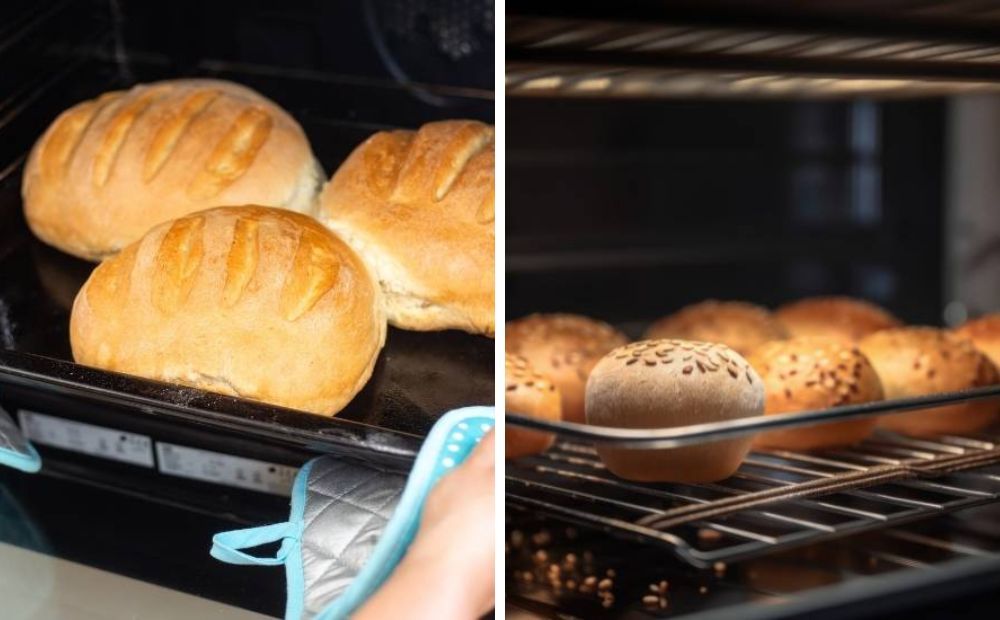
Baking bread in a toaster oven
Toaster ovens work by using three essential components: a heating element to heat up the cooking chamber, a thermostat to control the temperature, and a timer to control the cooking time.
Understanding how these components work together is key to understanding the cooking process in a toaster oven.
Preheating
Preheating is critical when using a toaster oven for baking, roasting, or toasting. The oven needs to reach the desired temperature before cooking begins.
Fortunately, due to its small size compared to full-sized ovens, a toaster oven heats up pretty fast. However, it is more likely to lose heat faster when you open its door.
To preheat the toaster oven, set the temperature to the desired level and wait for it to reach that temperature. The oven will signal when it's ready to use.
Cooking
Once the oven is preheated, it's time to start cooking.
Toaster ovens are versatile and can be used for a variety of cooking methods, including baking, roasting, broiling, and toasting.
The cooking time will depend on the type of food being cooked and the desired level of doneness.
When cooking in a toaster oven, it's important to keep an eye on the food to prevent burning.
It's also a good idea to rotate the food halfway through cooking to ensure even cooking.
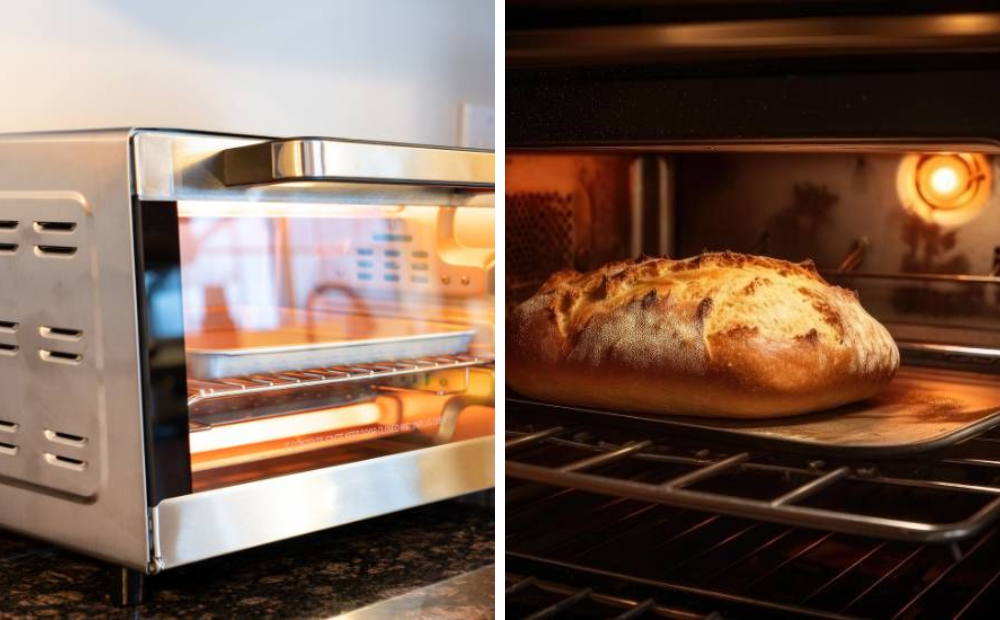
Browning and Crisping
Toaster ovens are great for browning and crisping food. This is because the heating element is located on the top of the oven, which allows for direct heat to the food.
To achieve a crispy, golden-brown finish, switch the oven to broil mode for the last few minutes of cooking.
Toaster ovens are a convenient and efficient way to cook a variety of foods.
By understanding the cooking process, you can get the most out of your toaster oven and create delicious meals with ease.
Safety Features
Toaster ovens are a convenient and useful kitchen appliance, but they can also pose some safety hazards if not used correctly.
That's why many toaster ovens come equipped with safety features to help prevent accidents. Here are some of the most common safety features found in toaster ovens:
Automatic Shut-Off
One of the most important safety features in a toaster oven is the automatic shut-off.
This feature ensures that the toaster oven will turn off automatically after a certain amount of time, preventing it from overheating and potentially causing a fire.
The shut-off time can usually be set by the user and is typically between 30 minutes to an hour.
Cool Touch Exterior
Another important safety feature in a toaster oven is the cool touch exterior.
This means that the exterior of the toaster oven stays cool to the touch, even when it's in use. This helps prevent accidental burns and makes it safer to use around children.
Toaster ovens may also come with other safety features such as:
- Non-slip feet to prevent the toaster oven from sliding or tipping over
- A crumb tray to catch any food debris and prevent it from catching fire
- A door that automatically opens when the cooking cycle is complete to prevent the user from accidentally burning themselves
It's important to read the instruction manual that comes with your toaster oven to familiarize yourself with all of the safety features and how to use them properly.
By following the manufacturer's instructions and using the safety features provided, you can ensure that your toaster oven is a safe and convenient addition to your kitchen.
Different Types of Toaster Ovens
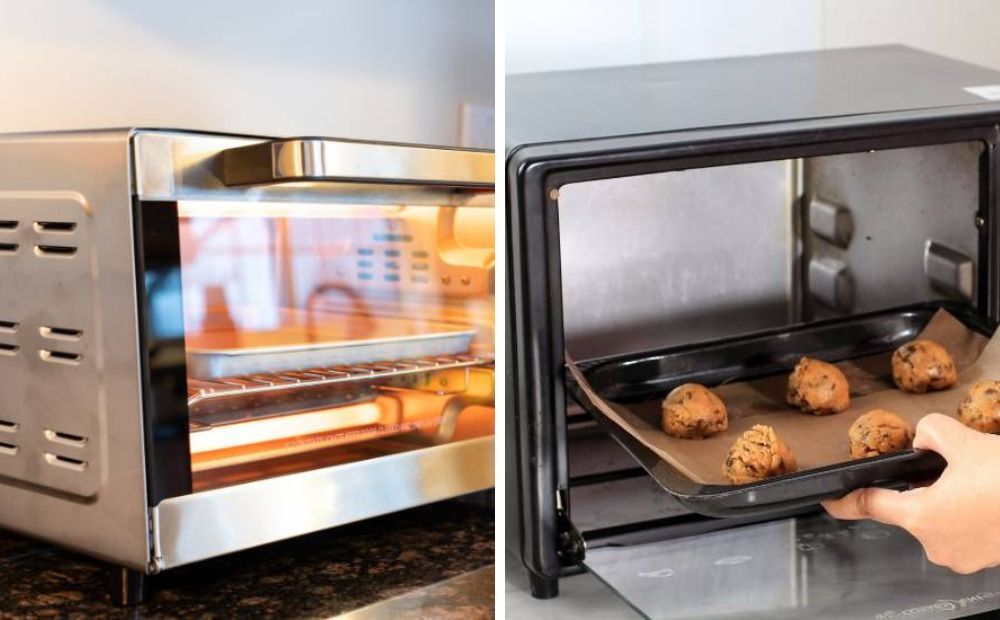
Different types of toaster ovens
Toaster ovens come in different types, each with its own unique features and functionality.
Here are some of the most common types of toaster ovens:
Convection Toaster Ovens
Convection toaster ovens use a fan to circulate hot air throughout the oven, which results in faster and more even cooking.
This type of toaster oven is perfect for baking, roasting, and broiling.
It is also great for making crispy foods such as French fries and chicken wings.
Convection toaster ovens are generally more expensive than other types of toaster ovens, but they are worth the investment if you want to cook food faster and more efficiently.
Infrared Toaster Ovens
Infrared toaster ovens use infrared technology to cook food, which means that they heat up quickly and cook food faster than other types of toaster ovens.
This type of toaster oven is perfect for cooking frozen foods and reheating leftovers. Infrared toaster ovens are also great for making crispy foods such as pizza and bread.
They are generally more expensive than other types of toaster ovens, but they are worth the investment if you want to cook food faster and more efficiently.
Rotisserie Toaster Ovens
Rotisserie toaster ovens come with a rotisserie attachment that allows you to cook meat and poultry evenly on a rotating spit.
This type of toaster oven is perfect for cooking whole chickens, turkeys, and roasts. Rotisserie toaster ovens are also great for making kebabs and other grilled foods.
They are generally more expensive than other types of toaster ovens, but they are worth the investment if you want to cook meat and poultry evenly and with a crispy skin.
In conclusion, when choosing a toaster oven, it is important to consider what type of cooking you will be doing most often.
If you want to cook food faster and more efficiently, a convection or infrared toaster oven may be the best option.
If you want to cook meat and poultry evenly and with a crispy skin, a rotisserie toaster oven may be the best option.

Energy Efficiency
Toaster ovens are known for their energy efficiency compared to full-sized ovens.
According to an ENERGY STAR scoping report, toaster ovens use 50% to 70% less energy than conventional ovens when used for small to medium-sized meals.
This is because toaster ovens are smaller and have a faster preheating time.
On average, toaster ovens take about five to 10 minutes to preheat, while conventional ovens can take up to 15 minutes or more.
Toaster ovens are also more energy-efficient than microwaves. While microwaves are faster at cooking, they use more energy to do so.
Toaster ovens are better suited for cooking small to medium-sized meals and snacks, making them a more energy-efficient option for those who don't need to cook large quantities of food.
When using a toaster oven, it's important to keep in mind a few energy-saving tips. After each use, unplug your toaster oven for safety and to save energy.
Convection toaster ovens are more modern and extend the possibilities of this compact appliance.
They use a fan to circulate hot air, which cooks food faster and more evenly, reducing cooking time and energy usage.
Overall, toaster ovens are a great option for those looking to save energy and reduce their carbon footprint in the kitchen.
By using a toaster oven instead of a conventional oven or microwave, you can save energy and money while still enjoying delicious meals and snacks.
Cuisinart Air Fryer Toaster Oven Review | CostcoZaddy
Maintenance and Cleaning
To keep a toaster oven working efficiently, regular cleaning and maintenance are essential. Here are some tips to help keep your toaster oven in top condition:
- Unplug the toaster oven before cleaning. This is important for safety reasons. Always make sure the toaster oven is completely cool before cleaning it.
- Remove any crumbs or debris from the crumb tray. The crumb tray is located at the bottom of the toaster oven and is designed to catch any crumbs or debris that fall during use. Simply slide out the tray and empty it into the trash.
- Clean the interior of the toaster oven. Use a damp cloth or sponge to wipe down the interior of the toaster oven. For stubborn stains, you can use a mixture of baking soda and water. Avoid using abrasive cleaners or steel wool, as they can scratch the surface of the toaster oven.
- Clean the exterior of the toaster oven. Use a damp cloth to wipe down the exterior of the toaster oven. For stubborn stains, you can use a mild cleaner. Avoid getting water or cleaner inside the toaster oven.
- Clean the racks and trays. Remove the racks and trays from the toaster oven and wash them in warm, soapy water. You can also use a non-abrasive cleaner. Make sure to dry the racks and trays thoroughly before putting them back in the toaster oven.
- Check the heating elements. Over time, the heating elements in a toaster oven can become coated with grease and food debris, which can affect their performance. To clean the heating elements, use a soft-bristled brush to gently remove any debris.
By following these simple maintenance and cleaning tips, you can help ensure that your toaster oven continues to work efficiently and effectively for years to come.
- How to Clean a Toaster Oven
Frequently Asked Questions
How does a toaster oven use convection to cook food?
Toaster ovens use convection to circulate hot air around the food, which helps to cook it evenly and quickly. The fan inside the oven blows the hot air around, which means that the heat is distributed more evenly than it would be in a regular oven. This is especially useful when cooking foods that need to be crispy, such as pizza or french fries.
What is the difference between a toaster oven and a microwave?
While both appliances can be used to heat up food, there are some key differences between toaster ovens and microwaves. Toaster ovens use heat to cook food, while microwaves use radiation. This means that toaster ovens can be used to cook a wider variety of foods, and can often produce better results. Microwaves are generally faster, but can sometimes leave food soggy or unevenly cooked.
How does a toaster oven's heating element work?
Toaster ovens have heating elements that are located at the top and bottom of the oven. When the oven is turned on, these elements heat up and radiate heat throughout the oven. Some toaster ovens also have a third heating element that is located near the fan, which helps to circulate the hot air more effectively.
What are the advantages of using a toaster oven instead of a regular oven?
Toaster ovens have a number of advantages over regular ovens. They are smaller and more portable, which makes them ideal for small kitchens or for people who don't have a lot of counter space. They also use less energy than regular ovens, which can help to save money on electricity bills. Additionally, toaster ovens can be used to cook a wider variety of foods than regular ovens, and can often produce better results.
How can you bake in a toaster oven?
To bake in a toaster oven, you will need to set the temperature and the timer to the appropriate settings. You can then place your food in the oven and let it cook. It is important to keep an eye on the food while it is cooking, as toaster ovens can sometimes cook food more quickly than regular ovens. You may also need to adjust the temperature or the cooking time depending on the recipe.
What are the disadvantages of using a toaster oven compared to a regular oven?
While toaster ovens have many advantages, there are also some disadvantages to using them instead of regular ovens. For example, toaster ovens are generally smaller than regular ovens, which means that you may not be able to cook as much food at once. Additionally, toaster ovens can sometimes cook food more quickly than regular ovens, which can lead to overcooked or burnt food if you're not careful. Finally, some people find that toaster ovens are not as versatile as regular ovens, and may not be able to cook certain types of food as well.
In the market for a toaster oven but want one in a color? Check out our top quality picks that could work for you!
